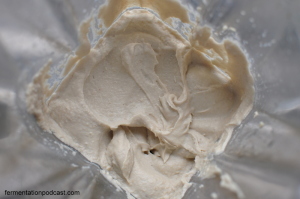

After this time it should be ready to transfer to the fridge. You’ll know when your fermentation is done, you will notice little pockets of air and the ‘cheese’ will slightly rise. Warmer climates will require less time in this step. Depending on the temperature and time of year where you are, you may need a little less or a little more time. Seal with an airtight lid and place in a warm spot, out of direct sunlight for 48-72 hours. Gently smooth the mixture to a glass jar or glass container and pour enough olive oil over the top to ‘seal’ the cashew mixture. Mix through your optional flavors (lemon juice, nutritional yeast, herbs) Leave to ferment for 24 - 72 hours, depending on your climate. Cover the bowl with a clean, dry tea towel or a couple of layers of cheesecloth and secure with a rubber band (see images in post above). You may need to add an additional 1 tablespoon of filtered water at a time to reach a creamy consistency. Ensure there is enough space at the top of the bowl so that the towel wont touch the cheese when placed on top. Drain and rinse well.īlend the soaked cashews with apple cider vinegar or sauerkraut brine. Soak the cashews in filtered water with a pinch of sea salt for at least 6 hours or overnight. Optional - lemon juice, nutritional yeast, finely chopped fresh herbs to flavor Here is our favorite healthy vegan cheese, the fermented anti-inflammatory cashew cheese.Įquipment: Blender & spatula, glass container or jar with an airtight lidģ tablespoons apple cider vinegar with the mother, sauerkraut brine, or homemade kombucha

But the real challenge is finding the perfect plant-based replacement - or at least it was until now. And it’s no surprise, there are studies that show that cheese is just as addictive as many other substances. When plant-based foodies are asked the thing they miss the most, you’ll find the answer is almost always cheese.


 0 kommentar(er)
0 kommentar(er)
